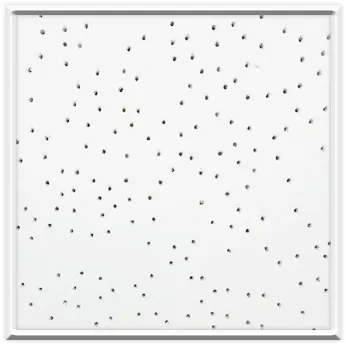9 月 . 24, 2024 23:59 Back to list
mineral fibre board ceiling vs gypsum board
Mineral Fibre Board Ceiling vs. Gypsum Board A Comprehensive Comparison
When it comes to choosing the right materials for ceiling construction and design, two popular choices often come to mind mineral fibre board and gypsum board. Both materials have their own unique characteristics, benefits, and applications, making them suitable for different environments and aesthetic preferences. In this article, we will explore the key differences between mineral fibre board ceiling and gypsum board, helping you make an informed decision for your next project.
Composition and Material Properties
Mineral fibre board, commonly made from recycled materials such as wood fibers, mineral wool, and various additives, is known for its lightweight yet robust nature. This type of board is designed to offer sound absorption, fire resistance, and thermal insulation, making it ideal for commercial spaces such as offices, schools, and hospitals.
On the other hand, gypsum board, often referred to as drywall, is composed primarily of gypsum plaster sandwiched between two sheets of heavy paper. It is popular for residential applications due to its smooth finish and versatility. Gypsum board is also fire-resistant to some extent, as the gypsum core contains water molecules that can help prevent fire spread.
Aesthetic Considerations
Aesthetically, both materials offer distinctive looks but cater to different design preferences. Mineral fibre boards can be found in a variety of textures and patterns, allowing for creative ceiling design that can enhance the overall ambiance of a space. Their acoustic properties can also be a significant advantage in environments where sound control is essential.
Gypsum boards, with their sleek and uniform finish, are ideal for creating clean lines and seamless surfaces, making them perfect for modern interiors. They can be painted or textured to match any decor, providing a high degree of customization.
Installation and Maintenance
Installation processes for mineral fibre and gypsum boards differ. Mineral fibre boards are typically installed in a grid system, making them relatively easy to replace or repair. This feature can save both time and cost, particularly in commercial settings where sections of the ceiling might need to be accessed for maintenance.
mineral fibre board ceiling vs gypsum board

Gypsum board installation, while straightforward, requires more labor-intensive handling and finishing. It involves taping and mudding seams, followed by sanding to achieve a smooth surface. Additionally, if damaged, gypsum boards often need to be replaced entirely rather than simply patched, which can be more costly and time-consuming.
Durability and Performance
In terms of durability, mineral fibre boards are resistant to moisture and mold, making them suitable for environments where humidity is a concern, such as kitchens and bathrooms. However, they can be less robust in high-impact situations, as they may dent or crack under heavy force.
Gypsum boards are generally more durable and can withstand greater impact stresses, but they are susceptible to moisture damage unless treated with specific moisture-resistant products. This can be a crucial factor in selecting the right material for specific areas within a building.
Cost Comparison
Cost is another important factor in choosing between these two materials. Mineral fibre boards are often more cost-effective in large commercial projects due to their ease of installation and potential for lower maintenance costs. However, for smaller residential projects, gypsum boards might be more budget-friendly when considering the long-term life cycle and aesthetic appeal.
Conclusion
In summary, both mineral fibre board ceilings and gypsum boards have their own set of advantages and suitability for different applications. Mineral fibre boards excel in environments where sound absorption and moisture resistance are critical, making them ideal for commercial spaces. Gypsum boards, with their smooth finish and robust nature, are favored for residential applications and modern designs.
Ultimately, the choice between mineral fibre and gypsum boards should be based on the specific needs of your project, including aesthetic preferences, installation conditions, and budget considerations. By understanding the strengths and weaknesses of each material, you can ensure a successful outcome for your ceiling construction project.
-
Revolutionizing Interior Design with Ceilings t grid Suspended SystemNewsOct.29,2024
-
Revolutionizing Ceiling Design with ceiling access panel with Gypsum Tile WaterproofNewsOct.29,2024
-
Revolutionizing Interior Design with PVC Gypsum Ceiling: A Comprehensive GuideNewsOct.29,2024
-
Elevating Interior Design with High quality Mineral Fiber Ceiling TilesNewsOct.29,2024
-
Revolutionizing Interior Design with PVC Gypsum Ceiling: A Comprehensive GuideNewsOct.29,2024
-
Elevating Interior Design with High-Quality Mineral Fiber Ceiling Tiles: A Comprehensive GuideNewsOct.29,2024







